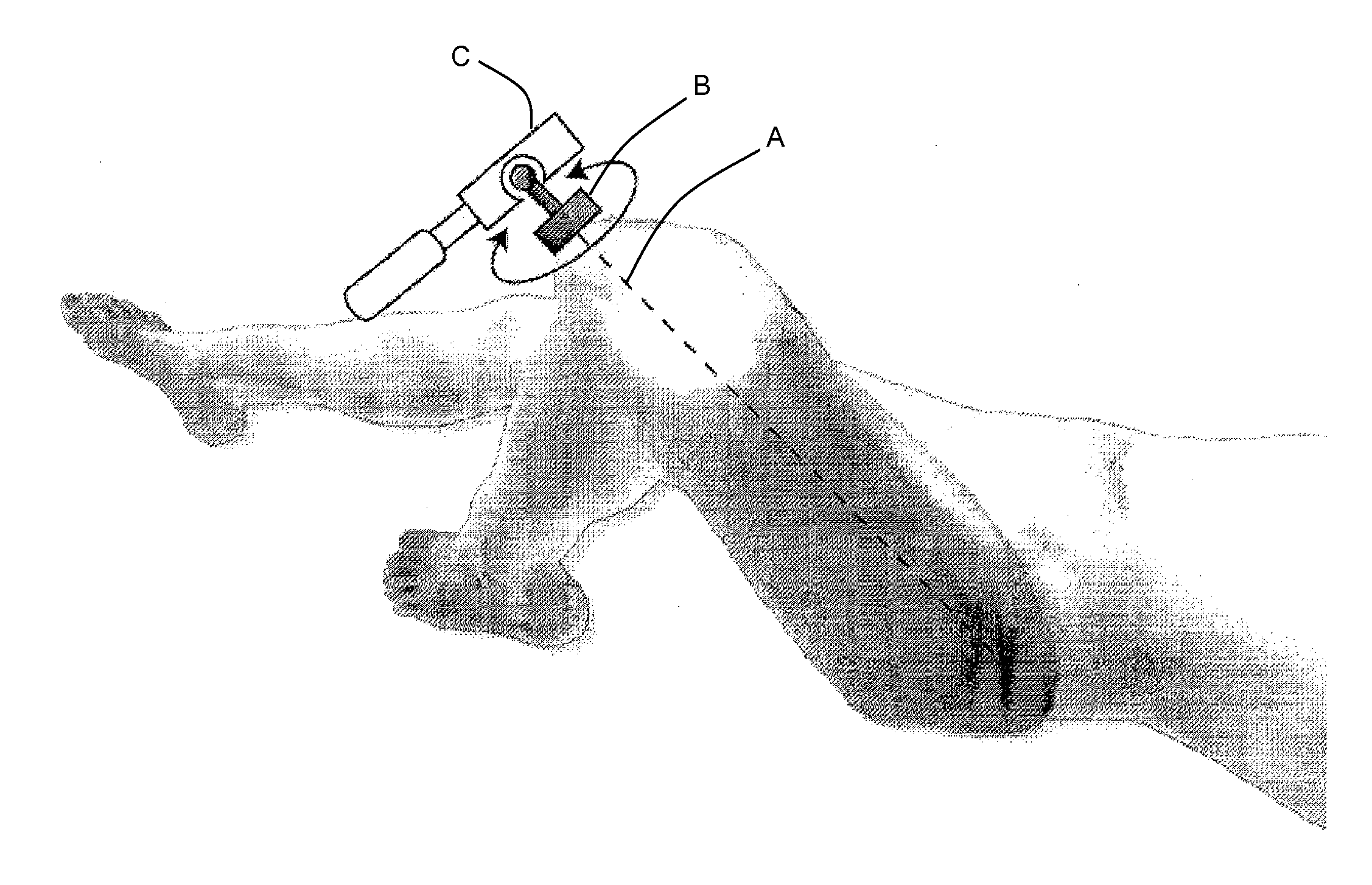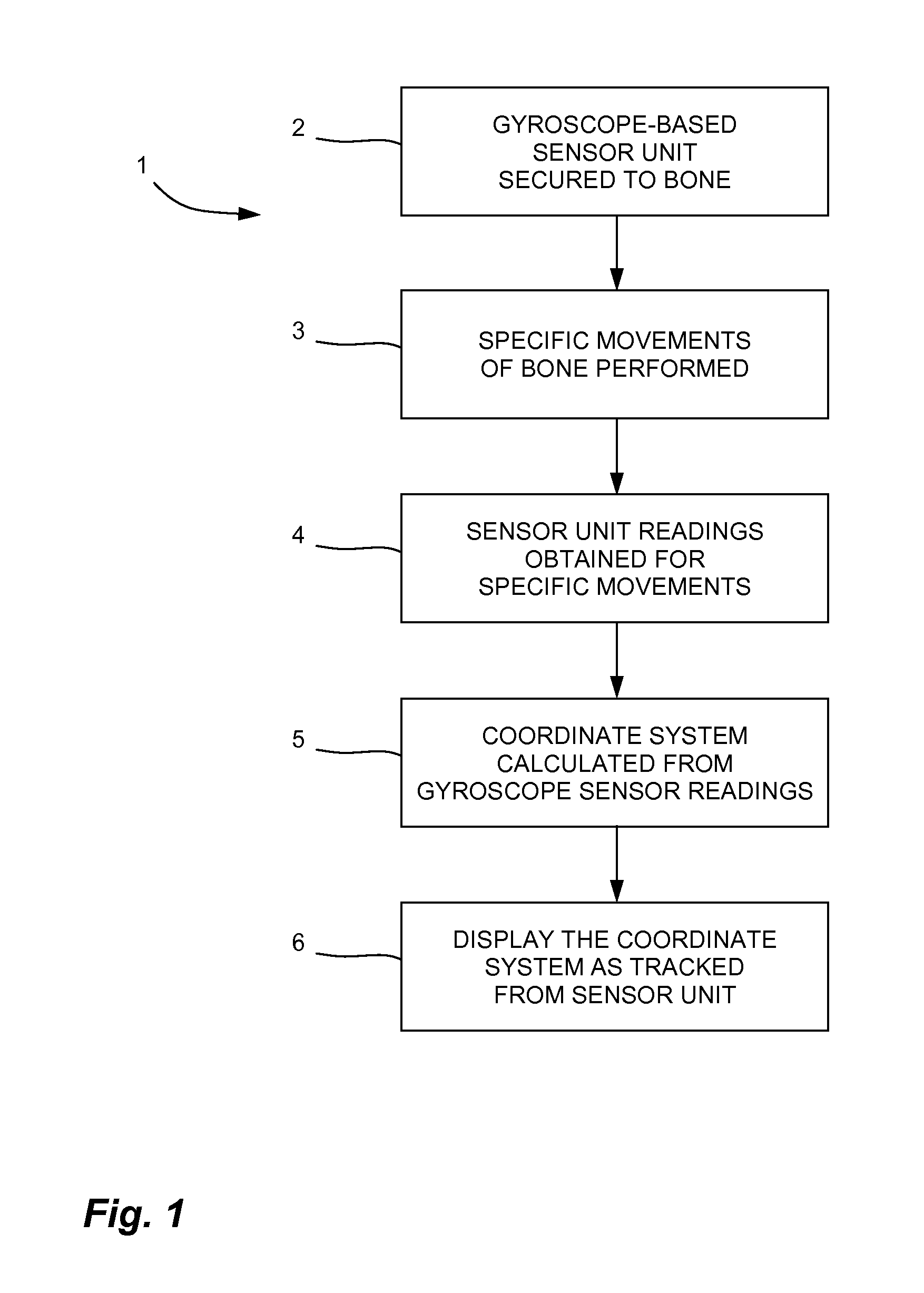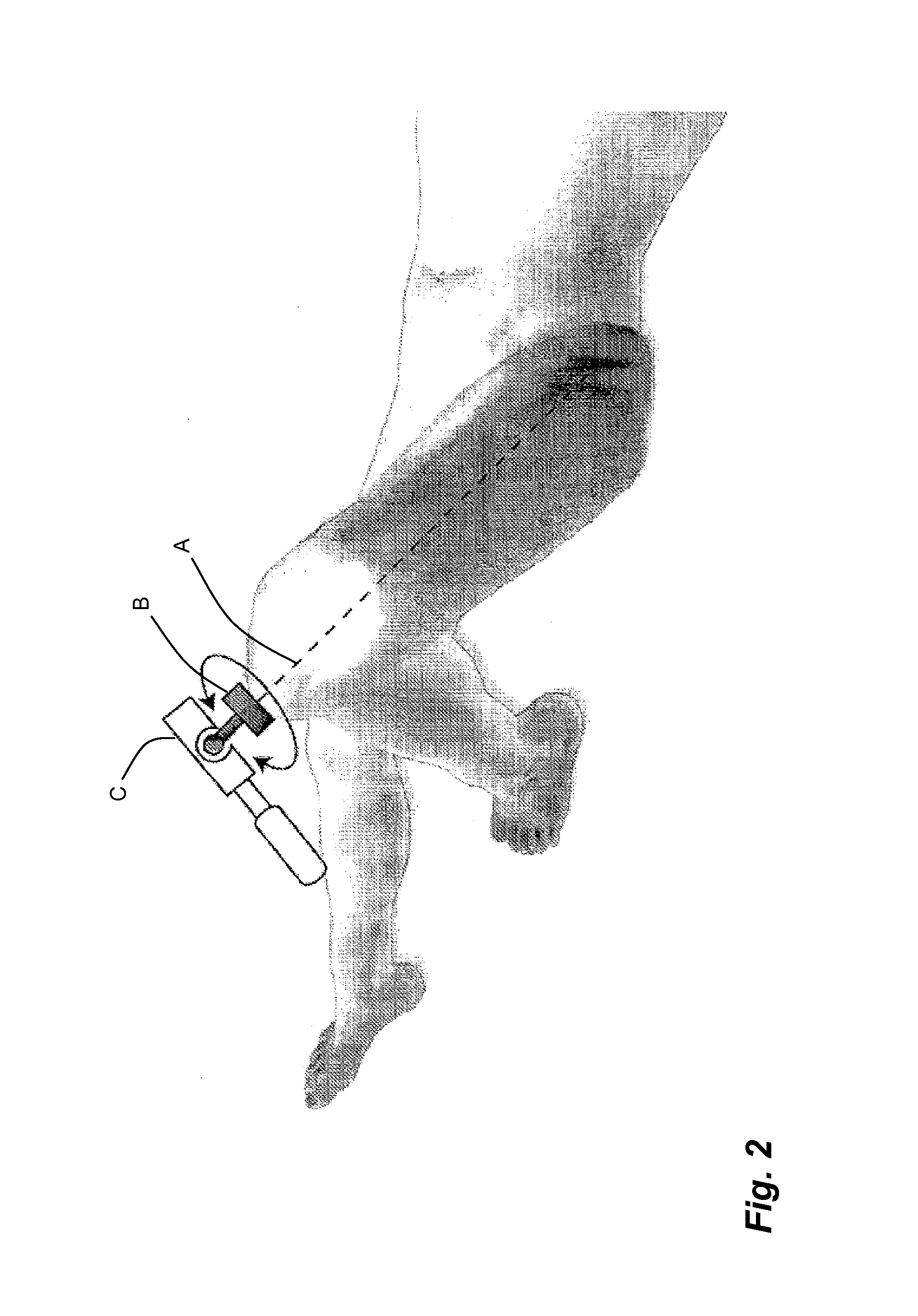Bone tracking with a gyroscope sensor in computer-assisted surgery
- Summary
- Abstract
- Description
- Claims
- Application Information
AI Technical Summary
Benefits of technology
Problems solved by technology
Method used
Image
Examples
Embodiment Construction
[0013]A gyroscope is a sensor which measures the instantaneous rotational velocity about an axis. If several gyroscope sensors are combined in a specific arrangement, a three-axis gyroscope sensor unit measuring the rotational velocity in x, y and z of a body is obtained. One property of gyroscopes is that if a three-axis gyroscope sensor unit rotates about a fixed axis, its output in x, y and z will be proportional to a direction of the rotation axis in the sensor coordinate system. The output represents a simultaneous rotation in x, y and z about a unit vector. Accordingly, three-axis gyroscope sensor units may be used to track axes of bones in computer-assisted surgery.
[0014]Referring to the drawings and more specifically to FIG. 1, there is illustrated a method 1 for tracking a bone in computer-assisted surgery. For clarity, the method 1 is described in an application related to the tracking of a femur. However, the method 1 can be used with some other bones and body parts, as w...
PUM
 Login to View More
Login to View More Abstract
Description
Claims
Application Information
 Login to View More
Login to View More - R&D
- Intellectual Property
- Life Sciences
- Materials
- Tech Scout
- Unparalleled Data Quality
- Higher Quality Content
- 60% Fewer Hallucinations
Browse by: Latest US Patents, China's latest patents, Technical Efficacy Thesaurus, Application Domain, Technology Topic, Popular Technical Reports.
© 2025 PatSnap. All rights reserved.Legal|Privacy policy|Modern Slavery Act Transparency Statement|Sitemap|About US| Contact US: help@patsnap.com



